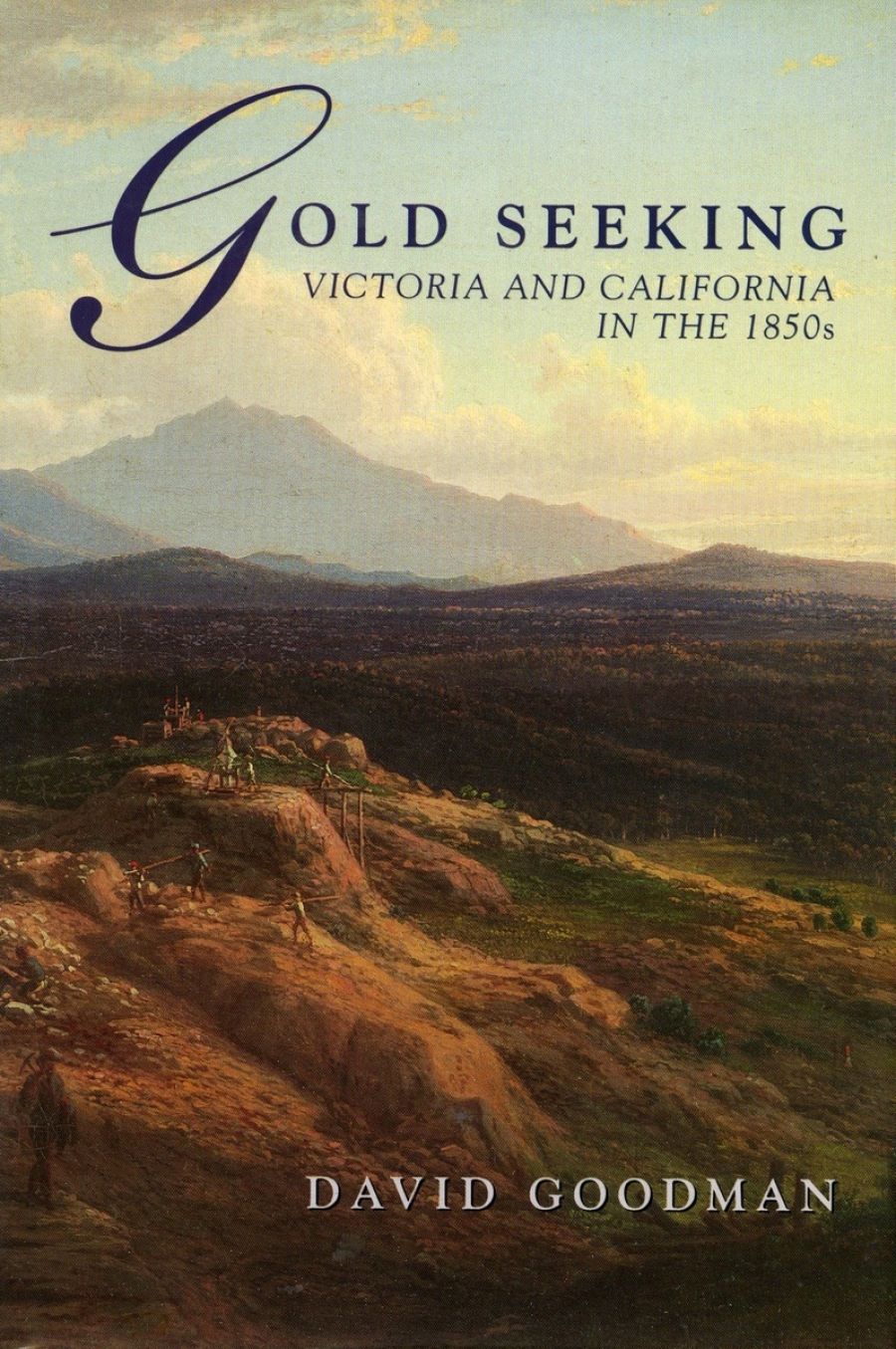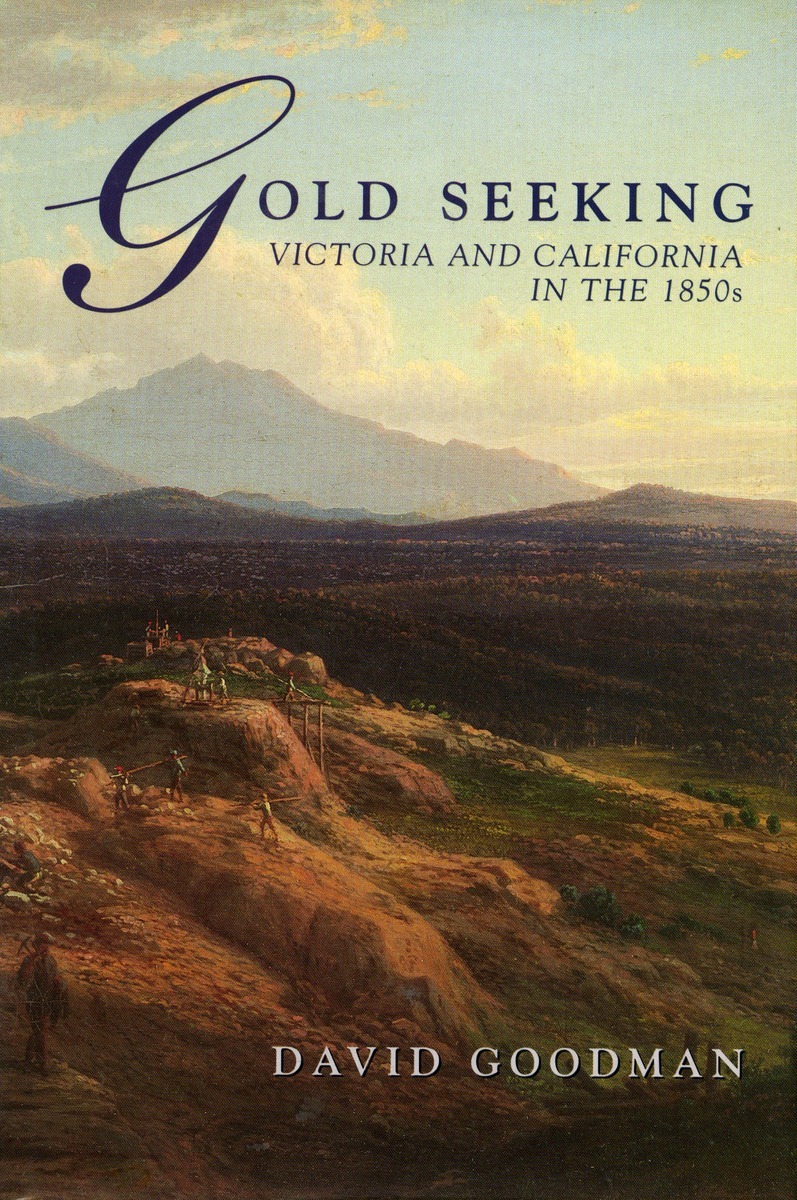
- Free Article: No
- Contents Category: History
- Review Article: Yes
- Article Title: The Cataclysm of Gold
- Online Only: No
- Custom Highlight Text:
The first virtue of this study is to remind us of the dramatic, potentially cataclysmic, quality of the mid-nineteenth century gold rushes to California in the late 1840s and to south-east Australia soon afterwards. That was prime among the several characteristics the two experiences had in common. At few other points is there so close affinity in the histories of Australia and the USA. The subject is altogether appropriate for one, like David Goodman, who has engaged in research in both countries, and who teaches their comparative history. The result is a most satisfying monograph. While the heavier incidence is on the Australian side, this is one of the few examples in the Australian repertoire of effective comparative work. One of few others in that list – Andrew Markus’s Fear and Hatred – also probes the goldfield, experience, describing how the British master-race treated the Chinese in either case. Goodman’ s aim is much more ambitious – to reveal basic socio-political responses to the cataclysm of gold.
- Book 1 Title: Gold Seeking
- Book 1 Subtitle: Victoria and California in the 1850's
- Book 1 Biblio: Allen & Unwin, $29.95 pb, 302 pp
- Book 1 Cover Small (400 x 600):

- Book 1 Cover (800 x 1200):

Was that cataclysm more for good, or for ill? That, at bottom, is the debate that Goodman expounds. Although such phrasing might appear simple, the issues were profound no less than the nature of ‘good’ and ‘ill’, and of the human beings caught in their dialectic. Such fundamentalism does have its restrictive side, nevertheless. Goodman writes with much skill and knowledge, but cannot move far from the one salient issue – would gold and the wealth it distributed with promiscuous and random generosity so disturb the established order as to create destructive chaos, or rather herald democratic novelty, exuberant and creative?
Goodman’ s emphasis is that voices of scepticism, or at least concern, were the louder. Indeed, he suggests, virtually the sole thorough-going optimists were such hard-line upholders of laissez faire as to believe that whatever happened must be for the best; some preachers of providential beneficence offered a Christian variant of the same idea. For the rest apprehension or even horror held sway. Gold threatened to subvert social relationships and sap order. Domestic and personal relations might well suffer complementary corrosion.
It is tautologous but true to remark that such ideas were certain to prevail among conservative elements of society. Thus Goodman gives considerable space to establishment pillars of early Victorian like Anglican Bishop Charles Perry, chief justice William á Beckett and his brother Thomas, and judge Redmond Barry. Although the views of these men will be known to readers of, say, Geoffrey Serle’s Golden Age and Ann Galbally’s Barry, Goodman embellishes them with style and context. For such people, gold indeed threatened to up-tum the world, for worse.
Goodman’ s more striking claim is that most radicals were also wary of gold’s disruptive power. Thus, his argument goes, the dominant radical response was to call for provision whereby miners could become yeomen farmers, stable and moral. Persuasively, he links this ideal with Chartist land-settlement policies of the 1840s; his argument would have strengthened by reference to Alan Beever’ s demonstration (Labour History, no 40) that by 1850 Britain’s radical press had become so enthusiastic for Australia as ‘a paradise for the working-man’ as to feel much misgiving at the news of gold. Goodman might also have extended his citation of Friedrich Engels’ remarks to Marx on the Australian discoveries so as to include ‘While in California at least it is the blackguards who are being lynched, in Australia one will lynch the honettes gens, and Carlyle will see his aristocracy of Rogues established in full glory’.
Withal, Goodman may have gone too far in diminishing liberal-radical enthusiasm for gold. He is aware of bias in the documentation – ‘the literate classes were also the anxious classes’ goes an elegant and expressive phrase. Yet there was a record of optimism. One pertinent essay appeared in the illustrated Australian Magazine in mid-1851:
men, enjoying in rich abundance the bounties of nature, will be employed in the grateful application of its principles to the development of the useful and the beautiful.
This item (I think) receives no mention from Goodman yet one adjoining, by Thomas á Beckett, appears time and again, as do other á Beckett laments. Goodman also omits reference to Noel McLachlan’s Waiting for the Revolution, which illuminates leftist excitement of the 1850s. In particular McLachlan’s gold-time radicals exulted in vanquishing the remnants of hated convictism. Thereby culminated the work of the anti-transportation movement, which dated from the 1840s. Goodman too little heeds continuity between his story and the ideals and forces at work by 1851 .
Australian convicts had often been targets for vigilante justice in California, and so ran another parallel between the continents. Goodman pursues this continuity at every stage. In California, conservatism drew more from eighteenth-century ideas of republican virtue than from such conservatism as Perry’s and the á Becketts’. Consonant with that, the American quest for order stressed the role of principled individuals rather than of formal institutions: ‘vigilante justice’, Goodman persuades us, is a much truer characterisation than ‘lynch law’. Withal, optimistic exuberance prevailed more strongly on that side of the Pacific. These are significant variants, but not fundamental. Both Australians and Californians were shaped by ‘the British Background’, which Goodman calls’ the context of a kind of historical anthropology of Englishness’. Whatever the label, the fact prevailed. ln stressing it, Goodman strikes one blow for de-mythologising ‘legendary’ and nationalist interpretations of the Australian experience, and affirms the high level of serious thinking that proceeded in the 1850s. His interpretations are often couched in the terms of post-modernism, and may strike all the more chords thereby. Yet not only in stressing British contexts does Goodman’ s work accord with earlier and admirable traditions in Australian historiography. While not surpassing Serle’s Golden Age, Gold Seeking stands beside that splendid book. In its de-mythologising and intellectuality, this is very much the kind of history for which Manning Clark called in 1956 and A.W. Martin in 1962. May it have worthy successors.


Comments powered by CComment